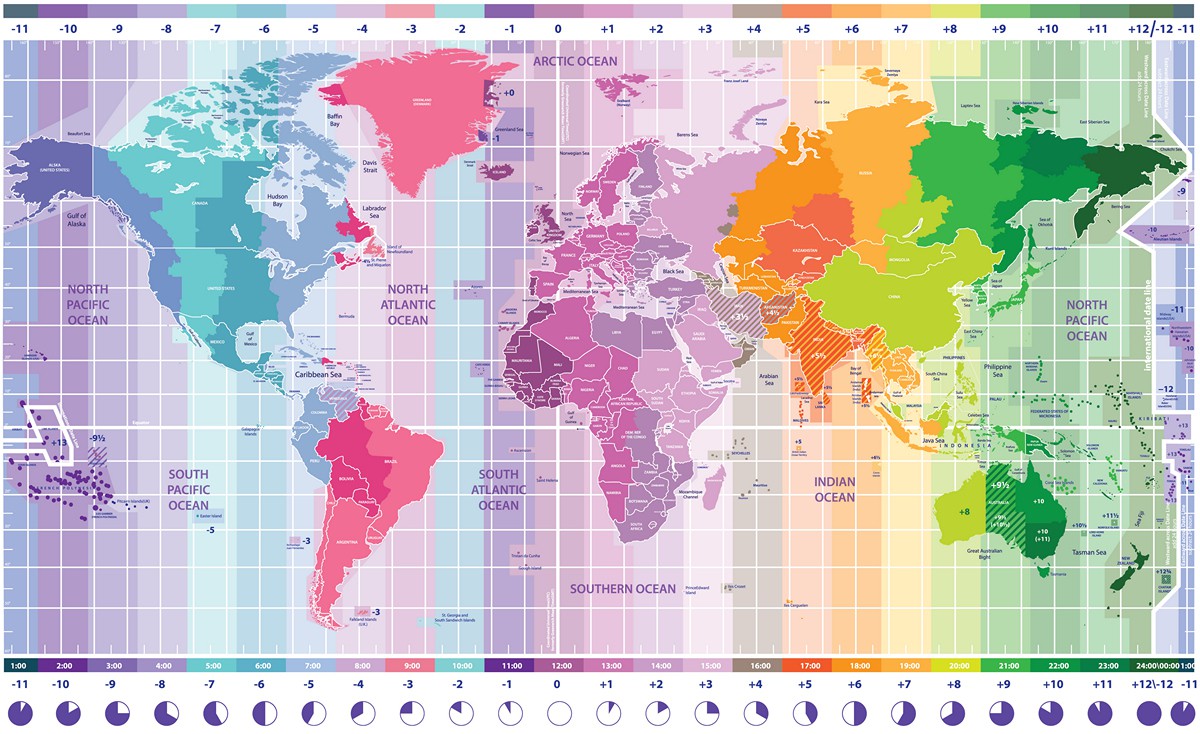

See the " Current number of leap seconds" section for the number of leap seconds inserted to date. Leap seconds are inserted as necessary to keep UTC within 0.9 seconds of the UT1 variant of universal time.

The current version of UTC is defined by International Telecommunication Union Recommendation (ITU-R TF.460-6), Standard-frequency and time-signal emissions, and is based on International Atomic Time (TAI) with leap seconds added at irregular intervals to compensate for the accumulated difference between TAI and time measured by Earth's rotation.

A decision whether to remove them altogether has been deferred until 2023. This CCIR Recommendation 460 "stated that (a) carrier frequencies and time intervals should be maintained constant and should correspond to the definition of the SI second (b) step adjustments, when necessary, should be exactly 1 s to maintain approximate agreement with Universal Time (UT) and (c) standard signals should contain information on the difference between UTC and UT." Ī number of proposals have been made to replace UTC with a new system that would eliminate leap seconds. This change also adopted leap seconds to simplify future adjustments. The system has been adjusted several times, including a brief period during which the time-coordination radio signals broadcast both UTC and "Stepped Atomic Time (SAT)" before a new UTC was adopted in 1970 and implemented in 1972. UTC was first officially adopted as CCIR Recommendation 374, Standard-Frequency and Time-Signal Emissions, in 1963, but the official abbreviation of UTC and the official English name of Coordinated Universal Time (along with the French equivalent) were not adopted until 1967. The coordination of time and frequency transmissions around the world began on 1 January 1960. It is effectively a successor to Greenwich Mean Time (GMT). It is within about 1 second of mean solar time (such as UT1) at 0° longitude (at the IERS Reference Meridian as the currently used prime meridian) and is not adjusted for daylight saving time. UTC offsets in diagonally striped areas are not whole hours.Coordinated Universal Time or UTC is the primary time standard by which the world regulates clocks and time. Find the current time offset – displayed in whole hours only – from Coordinated Universal Time (UTC) at the bottom of the map.(Doesn't work in older versions of IE – IE8 and below.) Hover your mouse over the map to highlight time zones.Click on any red dot and go to that city's page with time, weather, sunrise/set, moon phases and lots more.“DST” is displayed if there is Daylight Saving Time at the moment. Hover your mouse over any of the red dots to see the name of the city and country and current local time.To remove the pins permanently (undo not possible), simply click here or on the Time Zone Map link in the menu above.If you place more than one pin, an extra line of information is added underneath the map with links to those cities' pages. Search for any city in the search field above and place a black "pin" by that city on the map.Please note that the Time Zone Map is not a political map but a time zone map showing the time zone boundaries. Future changes are usually incorporated into our database before they take effect, so the map accurately reflects the current situation. Business Date to Date (exclude holidays)Īll clock changes worldwide are automatically taken into account and displayed in real-time as soon as you reload the page.


 0 kommentar(er)
0 kommentar(er)
